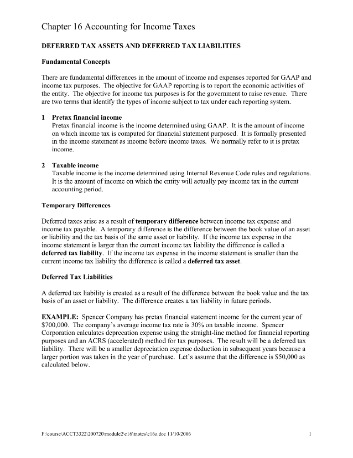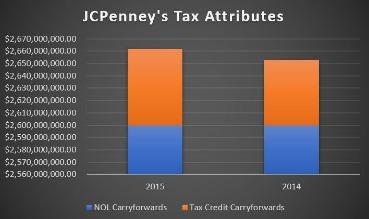
Goodwill is the portion of the purchase price that is greater than the fair market value of the assets and liabilities of the company that was bought. Goodwill is meant to capture the value of a company’s brand name, customer base, relationships with stakeholders, and employee relations. Current assets are recorded at the top of the statement and reflect the short-term assets of the company. Amortization is the same concept as depreciation, but it’s only used for intangibles. Amortization spreads out the cost of the asset each year as it is expensed on the income statement.
A company’s assets are a key consideration when assessing its financial health. They are categorized and accounted for in many different ways, with one of the primary types being tangible assets. In stark contrast to tangible assets, intangibles don’t have a physical existence.
Tangible long-term assets include land, machinery, equipment,
and building. Intangible long-term assets include patent, software,
and copyright. If assets are classified based on their convertibility into cash, assets are classified as either current assets or fixed assets.
Liquidation price will often be less than an appraiser’s value for several reasons. First, there are usually significant costs that a company may incorporate into the liquidation price. Second, some tangible assets are illiquid and may be difficult to move.
What Is an Asset?
Moreover, a company with a high net asset value could have low levels of risk when it comes to liquidity. A high NTA value also ensures protection against uncertainties in the market and helps a company retain its stock price. One of the most interesting features of a tangible asset is that you can convert them to cash. Thus, a company must have clear knowledge about the minimum value an asset can fetch from a quick sale or liquidation. In this method, an assessor is hired who determines the overall value that a bulk asset-buyer would pay for the tangible asset owned by a company. Similarly, enterprises operating in the refinery and production segment also own a number of tangible assets for efficiently carrying out their operations.
Standard Chartered (SCBFF) to Sell AFL Business, Stock Rises – Nasdaq
Standard Chartered (SCBFF) to Sell AFL Business, Stock Rises.
Posted: Wed, 30 Aug 2023 17:47:00 GMT [source]
For example, Meta (formerly Facebook) couldn’t list the Like button on its balance sheet because it’s an intangible asset it developed in-house. It could, however, theoretically list the “double tap” feature on Instagram, since it’s intellectual property it acquired when it bought Instagram—that is, it has a market value. To figure out the value of many intangible assets over the life of the asset, you’re going to use a process called amortization. To amortize is to gradually write off the initial cost of an asset over a given period.
Daily business operations
Intangible assets such as goodwill cannot usually be sold individually in an open market but in some cases they may be acquired from other companies. They may also be paid for and transferred as part of an acquisition or merger deal. Intangible assets do contribute to a firm’s net worth and total value if they are recorded on the balance sheet but it is up to the firm to current liabilities definition & example decide on any carrying value. Let’s say your business has $10,000 in total assets and $4,000 in intangible assets. You must record your tangible assets on your business balance sheet. A balance sheet is a type of financial statement that tracks your business’s progress by showing your assets, liabilities (what you owe), and equity (remaining money after paying expenses).
Tangible and intangible resources are important for valuation and debt-repayment purposes. An appraisal is an approximated valuation of a resource by a certified professional. For example, the Appraisal Institute sets the requirements to become a certified real property appraiser in the United States.
What are Tangible Assets – Its Calculation, Example and Difference with Intangible Asset
The report will note modernization efforts, construction quality, market conditions, and any notable impairments to recognize for the asset. Below is a portion of the balance sheet for Exxon Mobil Corporation (XOM) as of Dec. 31, 2021, as reported on the company’s annual 10-K filing. The Sensodyne brand has positive equity that translates to a value premium for the manufacturer. Companies can experience diminishing brand equity if their reputation is hurt by any negative actions.
All information is subject to specific conditions | © 2023 Navi Technologies Ltd. Sign up for Shopify’s free trial to access all of the tools and services you need to start, run, and grow your business. Try Shopify for free, and explore all the tools and services you need to start, run, and grow your business.
What are tangible assets?
In economics, the land is the resource that contains the natural resources used in carrying out production. It is considered to be an inexhaustible gift of nature that is fixed and immovable. In the end, the appraiser will compare these values with the values these assets can generate if left open in the market.

Sunshine31-Banks can also freeze your savings or checking account for prepaid credit cards as well. According to the ISO international standard, asset management should maximize the value of money. Generally, fixed asset management brings about an improvement in the quality and useful life of the equipment and ensures the best return on investment. For companies that have large inventories, the results may convert into millions of dollars in lost productivity, replacements, fines, or repairs. Beyond immediate costs, substandard equipment can have a negative impact on the quality of an organization’s products or services.
She could also include the cost of any electrical upgrade or installation costs related to the equipment. Terri’s company would record tangible current assets, such as inventory, at the cost she paid for them, usually determined from the invoice she received from the supplier. In accountancy, these type of assets depreciate or (less frequently) deplete. Companies own many different assets, and one type of asset a company may own is a tangible asset. Tangible assets are things that can be touched that also provide future economic benefit to the company. Though tangible assets have the benefit of having actual use in the real world, they also necessitate additional care for physical safeguarding and preservation.
A brand is an identifying symbol, logo, or name that companies use to distinguish their products in the marketplace and from competitors. Brand equity is considered to be an intangible asset because the value of a brand is not a physical asset and is ultimately determined by consumers’ perceptions of the brand. A brand’s equity contributes to the overall valuation of a company’s assets as a whole.
- This process is helpful because it helps to reflect the wear and tear on tangible assets as they are used during their lifetime.
- The replacement cost method includes not only the acquisition cost of the tangible asset but also the cost of making the asset fully operational.
- Businesses typically need many different types of these assets
to meet their objectives. - Depreciation is a noncash balance sheet notation that reduces an asset’s value by a scheduled amount over time.
- They can’t just make up numbers, so there are methods to determining the value of an asset.
Intangible assets are non-physical assets that lack tangible embodiment but still have a certain value. Tangible resources include all current assets and tangible noncurrent assets. An item is tangible if it can be touched and has a real, physical presence. When the most precise tangible asset value is needed, a company often hires an external, independent appraiser. The appraiser is often an expert in a given field (i.e. an expert in a specific type of collectible or an expert in real estate).
Types of Companies With Intangible Assets
An alternative expression of this concept is short-term vs. long-term assets. When a company owns a patent or a copyright, they own the exclusive right to make and sell that specific product or use a specific name. There is no generally agreed on value so the value is based on what the company thinks it’s worth. Terri’s company will use the tangible non-current assets to produce the money it earns from selling its goods and services, called revenue. Terri will not sell tangible non-current assets directly to her customers.